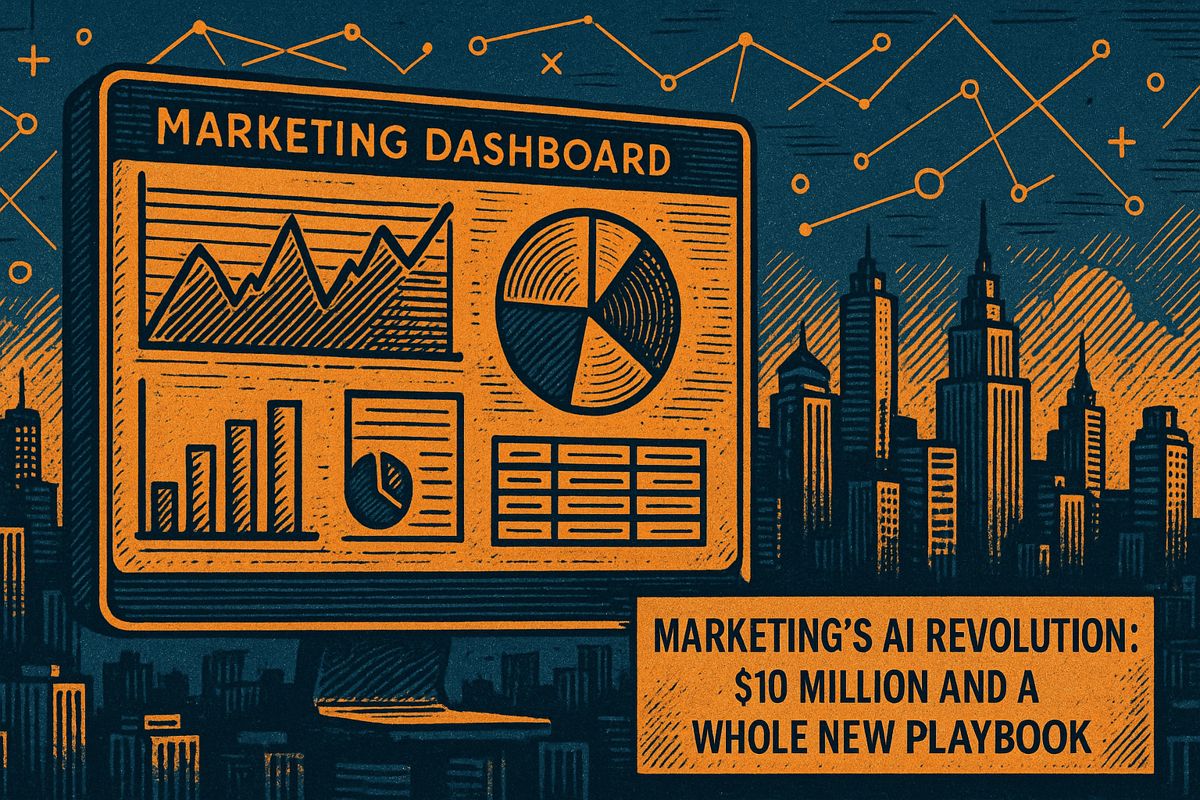Most companies struggle to turn AI pilot projects into real business results due to a lack of clear goals, messy data, and poor team collaboration. Less than half of AI pilots are adopted for everyday use, and few companies achieve high AI maturity. Key challenges include undefined success metrics, untrusted data, and insufficient stakeholder involvement. Successful companies address these by linking projects to simple business metrics, forming cross-functional teams early, and monitoring progress incrementally, facilitating the transition from pilot to valuable AI solutions.
Why do most enterprise AI pilots fail to reach production and deliver business value?
Most enterprise AI pilots fail to scale due to unclear ROI, poor data quality, and lack of cross-functional collaboration. To bridge the AI production gap, organizations should tie pilots to clear business KPIs, build fusion teams early, and use phase-gate governance for measurable, enterprise-wide impact.
In 2025, 60 % of enterprise functions have at least one AI pilot running, yet fewer than half ever reach production. Why do so many teams stall between the lab and the balance sheet? Recent field data and Gartner’s refreshed AI Maturity Model tell a consistent story, and they also point to the practices that separate the scaling leaders from the laggards.
The five-stage reality check
Gartner’s 2025-2026 model slots organizations into five levels:
| Level | Typical traits | Adoption trap |
|---|---|---|
| 1 Ad-hoc | Sporadic proofs-of-concept run by a single team | No shared roadmap or budget |
| 2 Basic | Repeatable scripts, basic data pipelines | ROI never quantified |
| 3 Standardized | Formal processes, light governance | Siloed wins that don’t scale |
| 4 Collaborative | Cross-functional squads, business KPIs defined | Change-management friction |
| 5 Adaptive | AI woven into strategy, continuous feedback loops | <10 % of companies reach this |
Only 9 % of surveyed firms sit at Level 5 today; the majority linger at Levels 2-3, where pilots look promising on slides but falter under real-world load.
Top three derailers
-
Unclear ROI
Bain’s 2024 study shows 43 % of stalled projects never had a pre-defined success metric. Without dollars-and-cents targets, funding dries up after the first budget review. -
Data friction
In 2025, 67 % of data leaders still distrust their own data (Dataversity). Poor lineage, bias, and incomplete records erode model accuracy and executive confidence. -
Cross-functional gaps
High-maturity organizations are 2.3× more likely to embed product, legal, and operations staff in every AI squad (Gartner survey, July 2025). Without them, hand-offs break and adoption stalls.
Patterns that break the cycle
1. Tie pilots to a single business KPI
*Tomorrow.io * aligned a marketing-automation pilot to “cost-per-lead” and hit a 30 % productivity gain within six months, funding the next three use cases organically.
2. Build “fusion teams” early
Stitch Fix pairs data scientists with stylists and merchandisers; this cross-functional squad reduced model-to-production cycle time from 12 weeks to 3 weeks.
3. Phase-gate governance
High-maturity firms run iterative experiments with fixed checkpoints:
– Week 4: Data quality audit
– Week 8: Shadow A/B test against legacy process
– Week 12: Go/No-go based on pre-agreed ROI threshold
Source: Gartner AI Maturity Roadmap 2025.
4. Auto-governance as infrastructure
Enterprises using AI-powered data-catalog tools report 54 % faster policy enforcement and a 39 % drop in compliance tickets, according to the 2025 Enterprise Data Governance Report.
Quick self-assessment checklist
Ask each pilot team:
- Can we state the business KPI in one sentence?
- Do we have a cross-functional owner beyond the data scientist?
- Is the data lineage visible to non-technical stakeholders?
- Have we defined the kill criteria if ROI < X %?
A “no” on any item is a red flag before scaling beyond the sandbox.
By addressing these gaps deliberately, the companies still stuck at Level 2 or 3 can move up the curve without burning more cash on pilots that never leave the lab.
Why do most AI pilots fail to reach enterprise-wide value?
Because 70 % of companies stall at the pilot stage, a 2025 Gartner survey found.
The root causes are rarely technical: they are organizational.
– Unclear ROI: only 20 % of low-maturity firms keep AI in production beyond three years, while 45 % of high-maturity firms do.
– Siloed teams: pilots are run by isolated data-science groups that never integrate with the business owners who must own and operate the solution day-to-day.
– Weak governance: lack of data-quality controls and risk frameworks turns promising models into fragile prototypes.
In short, pilot success does not predict scale success; structure around the pilot does.
How can an organization tell if it is ready to scale AI?
Use Gartner’s refreshed 2025 AI Maturity Model – a five-level diagnostic now embedded in their roadmap toolkit.
| Level | Characteristics | % of orgs* |
|---|---|---|
| 1 – Ad hoc | Sporadic experiments | 25 % |
| 2 – Basic | First models, minimal governance | 30 % |
| 3 – Standardized | Repeatable pipelines & KPIs | 25 % |
| 4 – Collaborative | Cross-functional teams and data sharing | 15 % |
| 5 – Adaptive | AI woven into strategy; continuous learning | <5 % |
*Industry snapshot compiled from Gartner 2025 survey of 450 enterprises.
The tool scores maturity across seven workstreams: data, talent, governance, infrastructure, business alignment, engineering, and change management.
An honest score below Level 3 is a red flag that scaling will fail without first fixing foundations.
What practical steps move a pilot from “interesting” to “profitable”?
-
Attach every pilot to a dollar metric
Bayer Australia combined Google Trends and climate data to time crop-protection campaigns; CTR rose 85 % YoY and CPC fell 33 %, turning the pilot into a multi-country budget line. -
Staff with triads, not silos
Stitch Fix pairs data scientists with merchandisers and stylists; this cross-functional pod model let them scale personalization to 3 M+ clients. -
Use phased gates
2024 McKinsey research shows teams that release in three-month, value-measured increments cut time-to-production by 40 %. -
Automate governance early
Tomorrow.io markets to 181 countries; AI-powered data cataloguing keeps its models compliant in real time, freeing engineers for new features instead of firefighting.
How should ROI be defined and tracked for AI initiatives?
- Direct value: revenue uplift (Tomorrow.io added 30 % marketing productivity) or cost avoidance (predictive maintenance at a manufacturer saved $4 M in downtime).
- Indirect value: faster decision cycles (Bayer reduced campaign launch time from 6 weeks to 10 days).
- Leading indicators: data-quality score (>95 % completeness), model-drift latency (<1 % per month), and user-adoption rate (>60 % within 90 days).
A 2025 Deloitte study warns that 39 % of Fortune 1000 data leaders still cannot prove governance impact to the C-suite; tying metrics to finance and OKRs fixes this gap.
Which governance practices actually matter for enterprise AI?
- Real-time lineage: automated lineage tools now trace every column from source to model output; TrustCloud 2025 survey shows firms with lineage in place cut incident-to-resolution time by 50 %.
- Model cards & bias registers: required by new EU AI Act (in force 2025); Pfizer’s internal registry of model risk ratings reduced audit findings to zero in 2024.
- Cloud-native policy as code: rules baked into CI/CD pipelines block releases that violate data-privacy policies; ING Bank uses this to limit go-live review time from days to minutes.
Without these, even the best algorithms become technical debt.



















